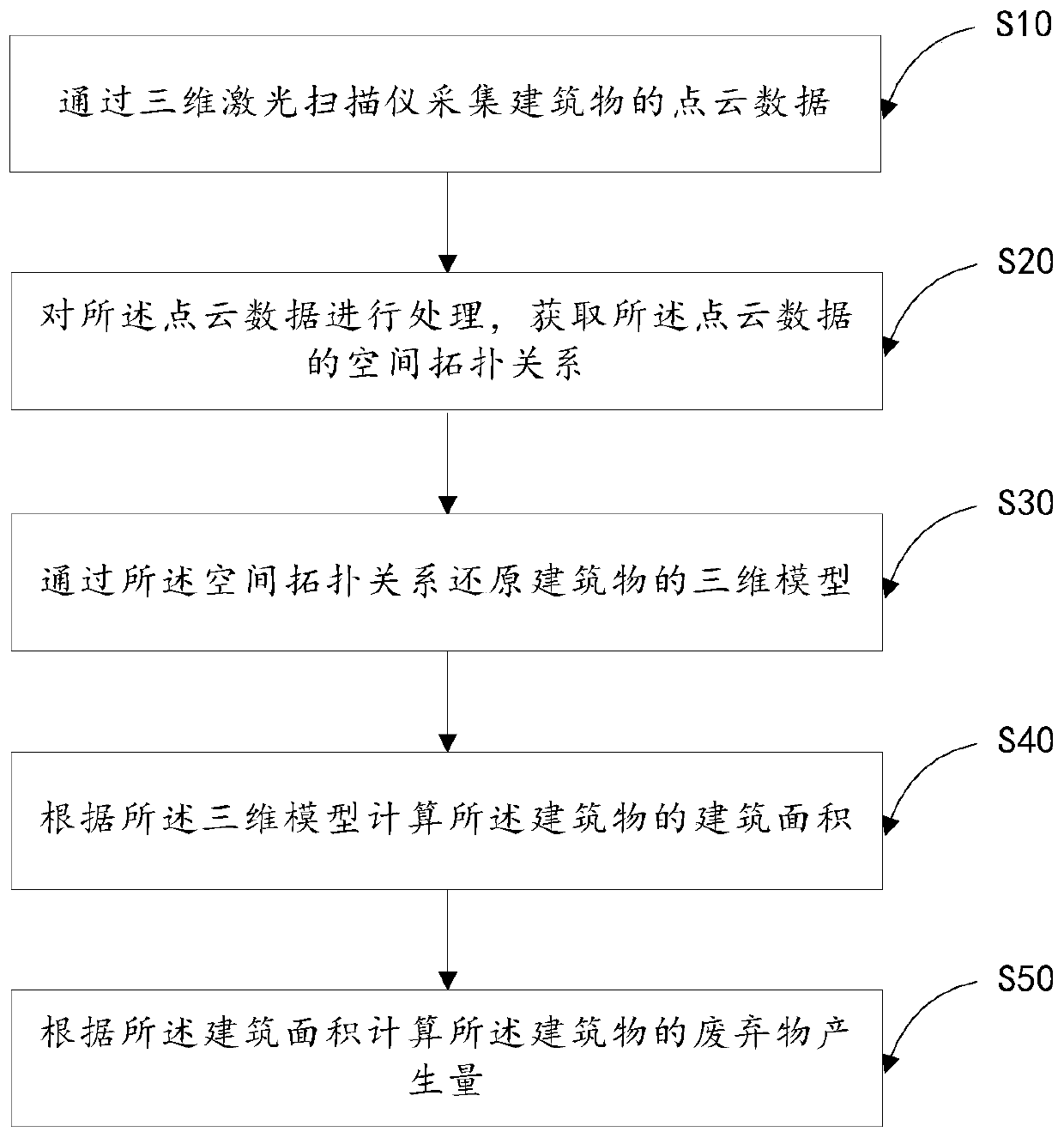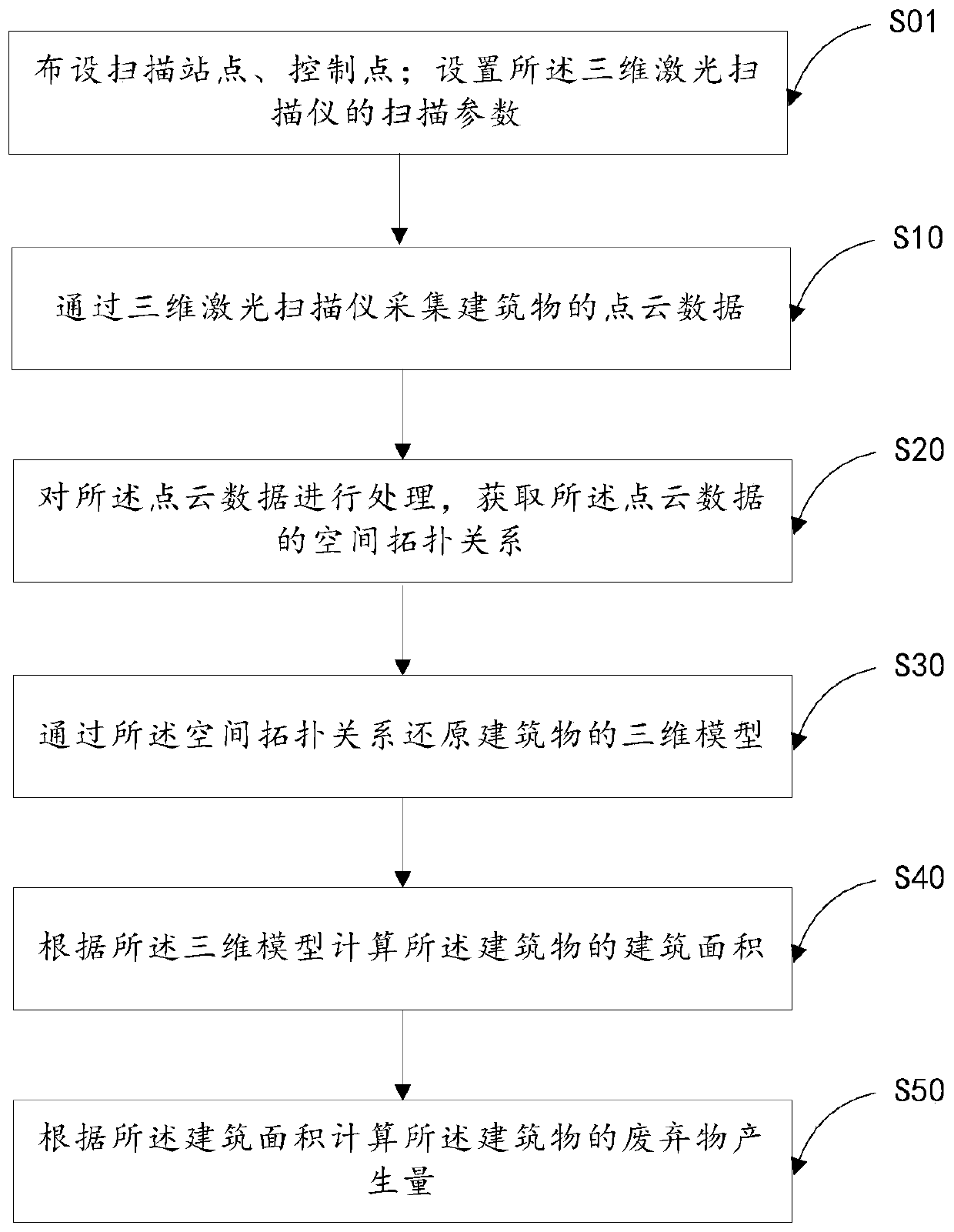Building demolition waste yield prediction method and device based on laser scanning
A technology of laser scanning and forecasting methods, which is applied in forecasting, 3D modeling, data processing applications, etc., and can solve problems such as time-consuming, manpower and material resources, and large errors
- Summary
- Abstract
- Description
- Claims
- Application Information
AI Technical Summary
Problems solved by technology
Method used
Image
Examples
Embodiment 1
[0053] Such as figure 1 As shown, in this embodiment, a method for predicting the generation of construction demolition waste based on laser scanning includes:
[0054] S10, collecting point cloud data of the building through a three-dimensional laser scanner;
[0055] S20. Process the point cloud data to obtain a spatial topology relationship of the point cloud data;
[0056] S30. Restoring the three-dimensional model of the building through the spatial topological relationship;
[0057] S40. Calculate the construction area of the building according to the three-dimensional model;
[0058] S50. Calculate the amount of waste generated by the building according to the building area.
[0059] In this embodiment, 3D laser scanning technology is used to predict the amount of waste generated from demolition of existing buildings to facilitate smart demolition.
[0060] In this embodiment, the three-dimensional laser scanning technology is also called the real scene replicatio...
Embodiment 2
[0083] Such as Figure 5 As shown, in this embodiment, a device for predicting the generation of construction demolition waste based on laser scanning includes:
[0084] Acquisition module 10, for collecting the point cloud data of building by three-dimensional laser scanner;
[0085] A processing module 20, configured to process the point cloud data and obtain the spatial topological relationship of the point cloud data;
[0086] A restoration module 30, configured to restore the three-dimensional model of the building through the spatial topological relationship;
[0087] A first calculation unit 40, configured to calculate the construction area of the building according to the three-dimensional model;
[0088] The second calculating module 50 is configured to calculate the amount of waste generated by the building according to the building area.
[0089] In this embodiment, 3D laser scanning technology is used to predict the amount of waste generated from demolition of...
PUM
 Login to View More
Login to View More Abstract
Description
Claims
Application Information
 Login to View More
Login to View More - R&D
- Intellectual Property
- Life Sciences
- Materials
- Tech Scout
- Unparalleled Data Quality
- Higher Quality Content
- 60% Fewer Hallucinations
Browse by: Latest US Patents, China's latest patents, Technical Efficacy Thesaurus, Application Domain, Technology Topic, Popular Technical Reports.
© 2025 PatSnap. All rights reserved.Legal|Privacy policy|Modern Slavery Act Transparency Statement|Sitemap|About US| Contact US: help@patsnap.com



